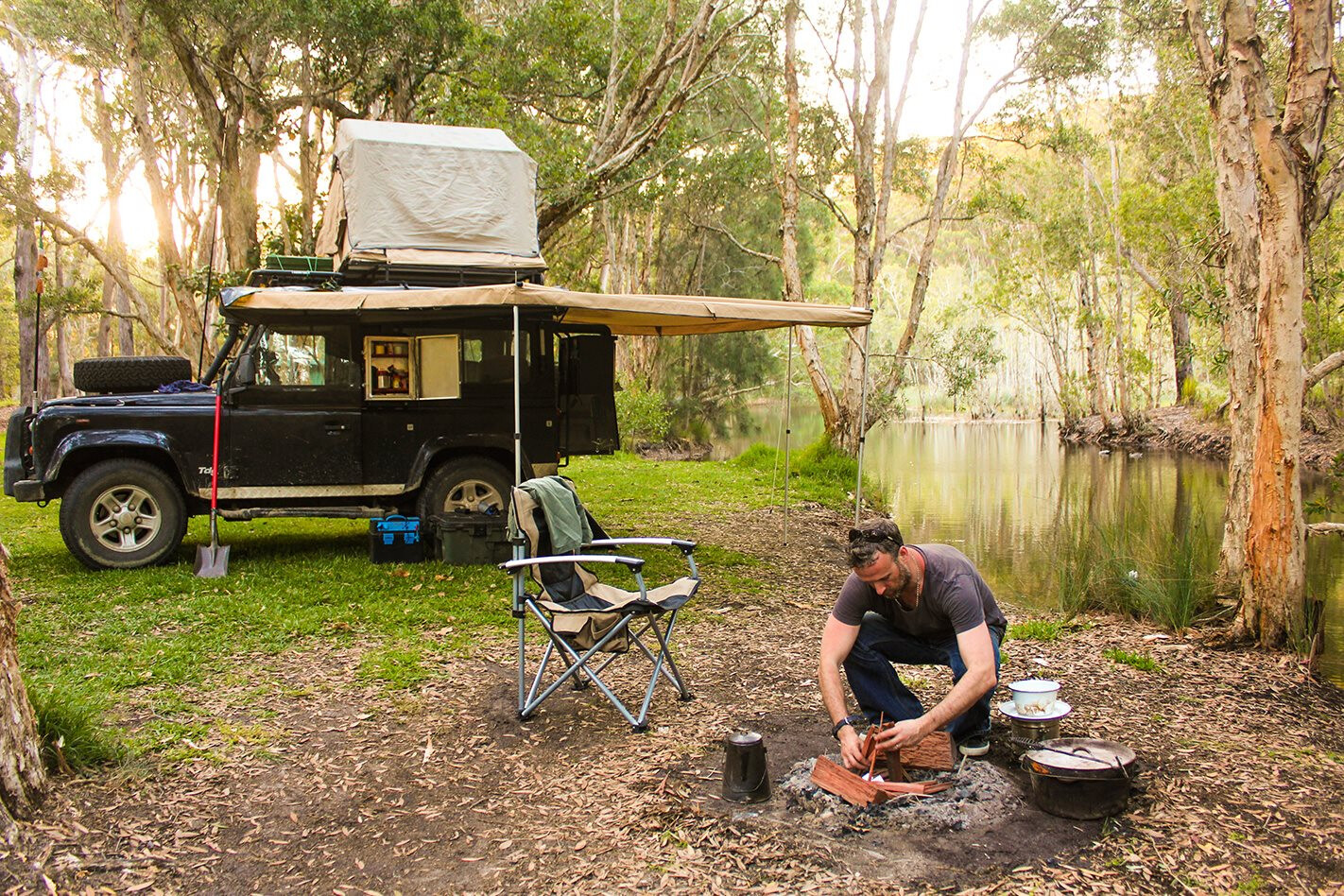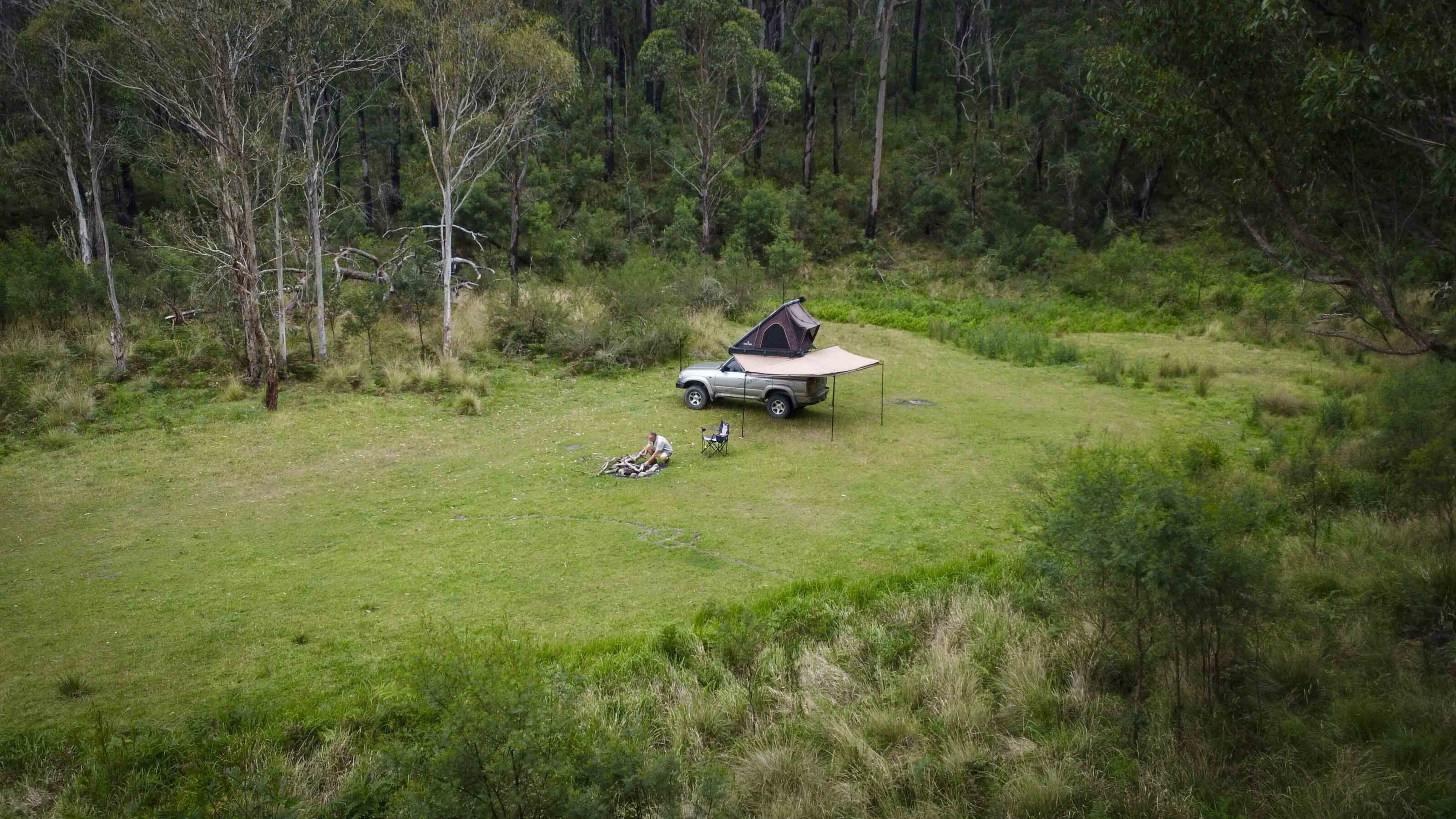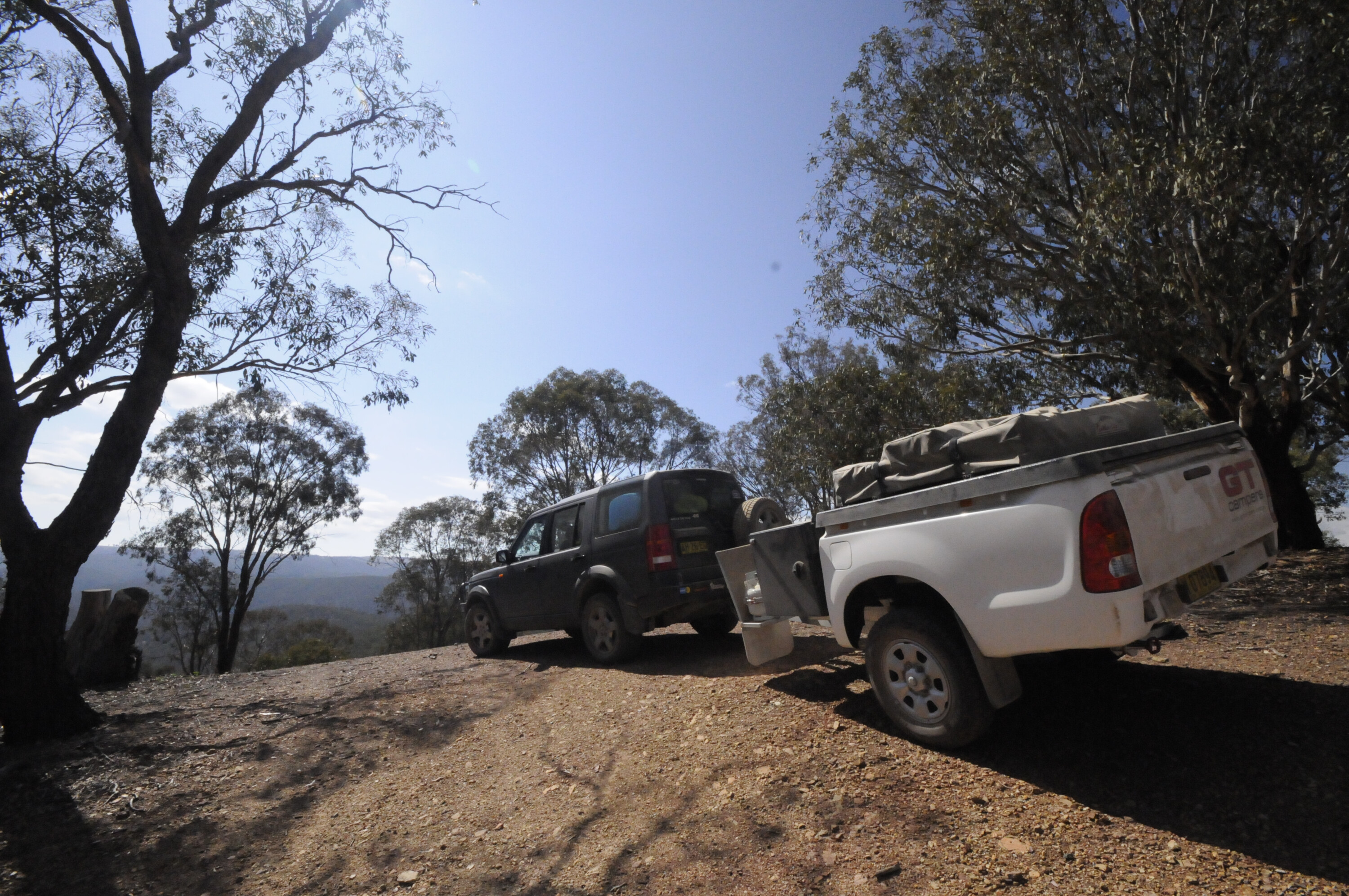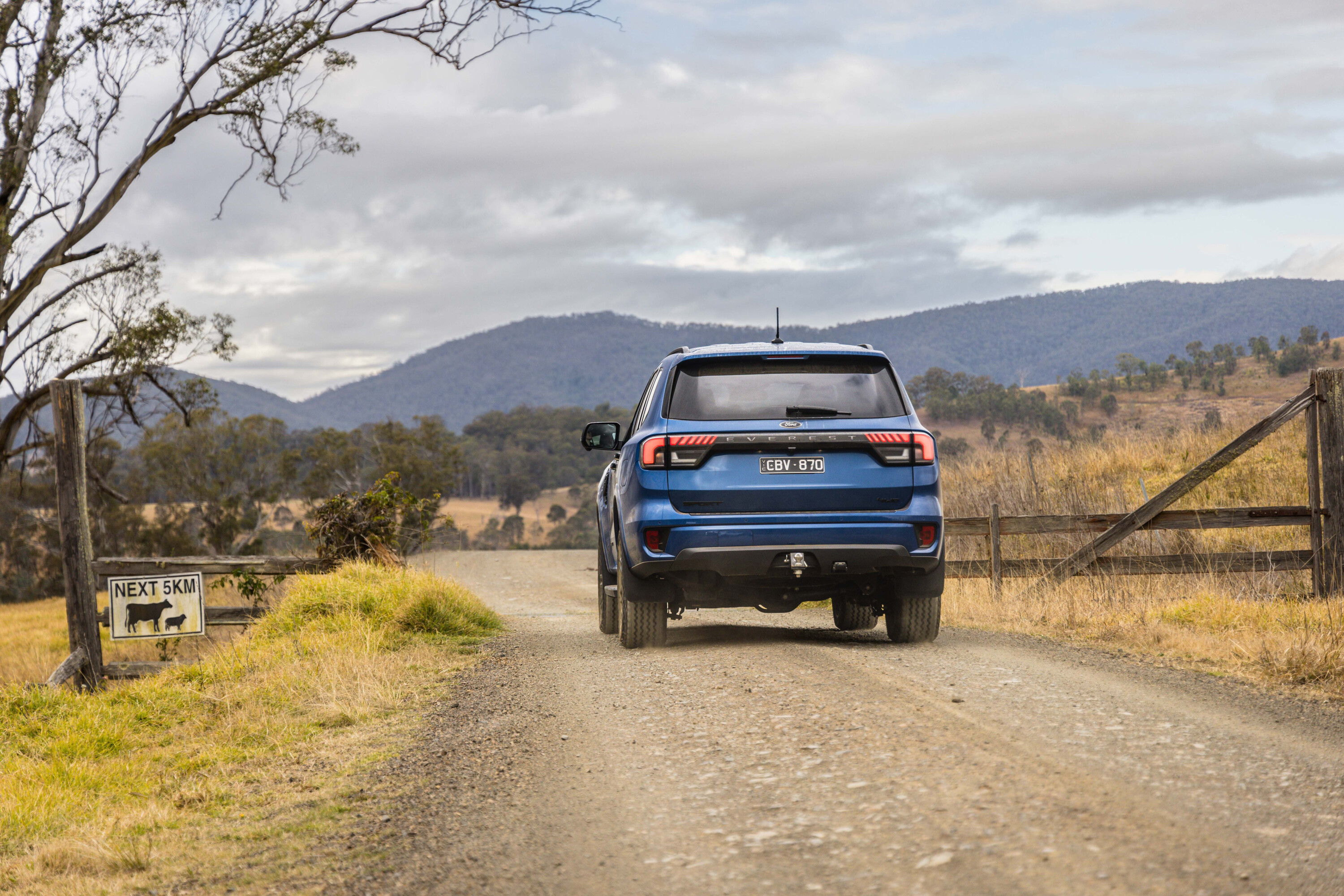WHEN someone told me there was a place just a couple of hours’ drive from Sydney where you could do lake and shore fishing, explore a rainforest, drive along a beach in your 4WD, and spend a day tackling a maze of unsealed tracks that covers nearly 70km² of forest, it sounded a bit too good to be true.
As it turns out, it is true – and it can all be done in a weekend. To top it off, the area offers some cracking campsites!
The Great Lakes region and neighbouring Wallingat National Park are a combination of waterways that include the Myall, Smiths and Wallis lakes – all located along the NSW coast, just 80km north of Newcastle. Wallingat National Park is a stone’s throw away from the lakes, located on the western side of Wallis Lake, and this forest offers plenty of unsealed tracks that make their way through the park’s rainforests, swamps and dry woodland areas.
The Great Lakes region is renowned for its beauty and striking landscapes, ranging from vast ocean beaches – with more than 80km of coastline – to sheltered waterways, lakes and coastal forests. The Myall Lakes, covering more than 100km², are the largest natural freshwater system on the NSW coast and are listed as a wetland of international importance. This lush environment is also home to the tallest tree in NSW, the Grandis, which tops a whopping 84 metres.
We decided to stay for two nights in the area and, on the first night, we stayed at the Mungo Brush campsite, one of the region’s many campgrounds. Here you can camp on the lake shore, or right beside the entrance to the Mungo Brush rainforest. You are also within walking distance of the beach, with panoramic views of the Pacific Ocean set against a backdrop of dominant sand dunes and white-sand beaches – which you can explore in your 4WD with the appropriate permit.
We parked the Land Rover right beside the entrance to the rainforest walk, and if you set up camp here you will be drawn into exploring this well-marked rainforest trail. This easy loop takes you on a short walk through a coastal rainforest that features ancient trees, plum pine, mock olive, coogera and brush bloodwood.
This moist and lush environment suits all types of wildlife including frogs, kangaroos, koalas, wallabies and a number of reptile species. And, at the Mungo Brush campsite, be prepared to share your campsite with numerous not-so-shy brush turkeys as they scavenge for whatever pickings they can get from the camp table.
After a pleasant overnighter we spent our second night at the Sandbar and Bushland Parks campsite. En-route we did some exploring, firstly taking in the recommended Violets Hill, then on to the Grandis (NSW’s largest tree). To get there from Mungo Brush, head towards Bulahdelah and continue north along the Pacific Highway.
After 6km look out for the turnoff to Violet Hill, and after a couple of kilometres along this track you will see the sign ‘The Grandis 5km’. Take this path and you will then hit a dirt track, which you’ll follow to its end for a couple more kilometres. An information point is located just before a short walking trail which leads to the viewing point of NSW’s largest tree. This Flooded Gum stands a staggering 84.3 metres and measures 2.7 metres wide.
From here we took Violet Hill Road, a narrow dirt track that leads to a great place to stop for lunch, right beside the lake. You’re almost guaranteed to see a number of majestic black swans here, swimming close to the lake shore. In the mid-1800s this place was thriving and buzzing with industry; there was a substantial timber trade on the lakes, with logs transported by barges to Newcastle and down to Sydney.
After a good look around we got back on Lakes Way Road and headed for Bungwahl, just under 20km from Boolambayte – a route that took us along the borders of Myall Lakes and Smiths Lake.
From Bungwahl, continue on the Lakes Way until you see the sign for the Sandbar and Bushland Park. Turn right and drive under the ranch-style welcome sign. From there you’ll meander along the dirt track through sub-tropical rainforest abundant with palm trees, before reaching the Sandbar and Bushland campsite.
The campground occupies a secluded bush location on the shores of the beautiful Smiths Lake and Sandbar Beach. There are two separate parks here, one in the bush and one by the lake.
We opted to camp in the bush and parked the Land Rover under the shade of some very tall gum trees beside a creek that feeds into Smiths Lake. It was our last camp in the Great Lakes region and we were delighted to be allowed to have a campfire right beside the creek, as fires aren’t allowed at Mungo Brush.
As we set up camp we were treated with a buzz of wildlife that included ducks, many other birds and a menacing hawk. Plenty of small fish could be easily observed through the creek’s clear water. Make sure to take the short walk across to Smiths Lake and watch the sun go down. We enjoyed a couple of cold beers as we shared the spectacle with a lone fisherman who had waded in up to his waist.
Next morning we were up at the crack of dawn for eggs on toast. As this was our last day in the Great Lakes region we spent the rest of the day tackling the tracks in the neighbouring Wallingat National Park. The 65.57km² park, described as one of the largest and most significant coastal forest reserves in north-eastern NSW, is located west of Wallis Lake
A network of unsealed tracks allows you to discover the park’s best features. Some of the smaller tracks that dissect the forest off the main track have signs notifying of risks and hazards, but despite those warnings we had no issues in our standard Land Rover Defender 90.
A popular and not-so-challenging unsealed track near Forster is a 25km loop of Wallingat. This track will take you through dense forest, and you’ll come across a couple of timber bridges – none of which will cause any drama. Note that the bridge crossing Boggy Creek has a three-tonne load limit, but unless you’re driving a kitted-out Unimog or large Russian military truck you should have no issues.
If you decide to camp in Wallingat National Park there are a couple of cracking campsites, including the Wallingat River campground, a picturesque riverside campsite towered over by eucalyptus trees, and the Ferny Creek campground. This campground can only be reached in a 4WD and is highly recommended by locals as a great fishing spot.
If you have a spare weekend, or longer, the Great Lakes region and the Wallingat National Park present an incredibly diverse and natural environment. This isn’t an epic 4WD adventure, but with its picturesque lakes, coastal beaches, walking trails and 4×4 tracks, you will be pleasantly surprised with the variety of activities you can enjoy in just a few days.
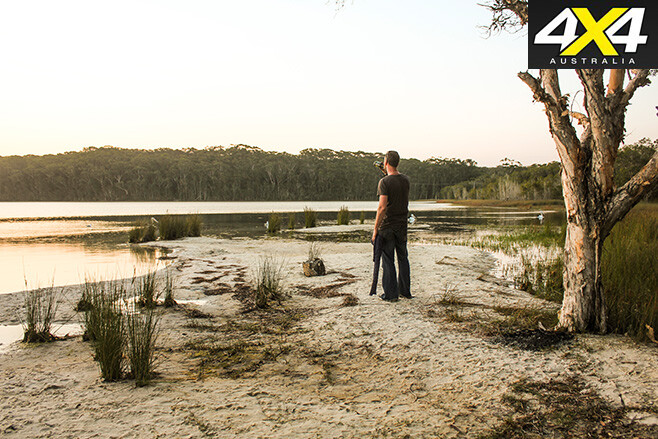
TRAVEL PLANNER
WHERE THE Great Lakes, just three hours’ from Sydney, are a network of waterways that include the Myall, Smiths and Wallis lakes and sit between Nelson Bay and Forster, north of Newcastle.
MAPS HEMA Maps’ Australia Easy Read Road and 4WD Atlas (9th edition) is useful. The Myall Lakes, Booti Booti and Wallingat National Parks’ visitor guide is available from tourist information offices.
CAMPSITES THE Mungo Brush campground is a well-known campground near Hawks Nest. There are more than 22 campgrounds within the Myall Lakes. The Sandbar and Bushland Park campground can be found some 20km south of Forster. There are two idyllic campsites in the Wallingat National Park: the Wallingat River campground and the Ferny Creek campground.
FUEL AND SUPPLIES THE area is serviced by the towns of Hawks Nest, Forster and Bulahdelah.
KEY CONTACTS WALLINGAT National Park is operated by Great Lakes (Pacific Palms), phone: (02) 6591 0300; (02) 6554 0489. Sandbar and Bushland Caravan Park, phone: (02) 6554 4095 www.sandbarpark.com.au
RESTRICTIONS AND PERMITS 4WD beach permits are required to drive along the beach north of Hawks Nest. General park entry and camping fees also apply. The permit allows access to beaches in the Great Lakes and Greater Taree City Council areas. Fishing permits are also needed. The lakes, including the Myall Lakes National Park and the Wallingat National Park, are always open but may have to close at times due to poor weather or fire danger.
TRIP STANDARD Suitable for standard 4WDs. All tracks are well graded, particularly around Myall Lakes. Be sure to pack recovery gear, as things can get interesting if the tracks are wet.

